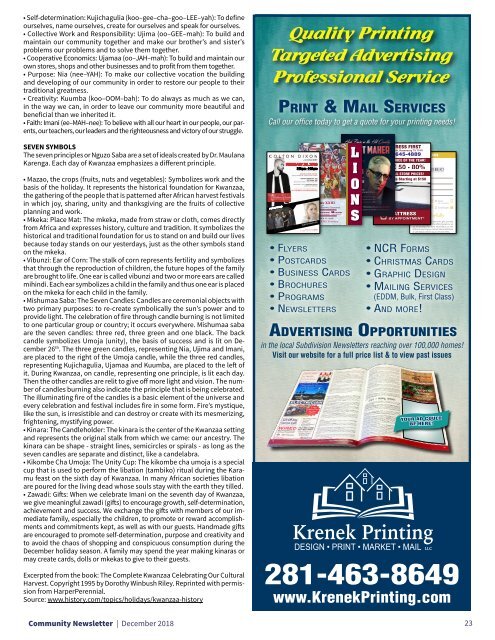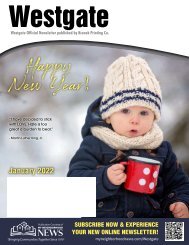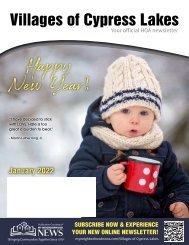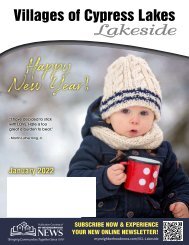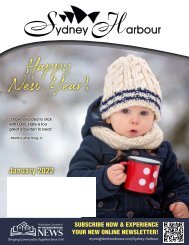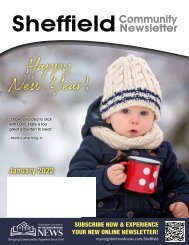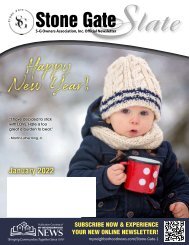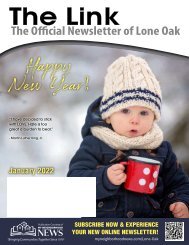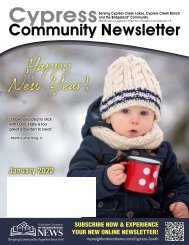You also want an ePaper? Increase the reach of your titles
YUMPU automatically turns print PDFs into web optimized ePapers that Google loves.
p r e s e n t e d b y<br />
Door registration opens at 4:30 pm<br />
1901 N. Shoreline Dr. Corpus Christi, TX 78401<br />
group rates available • children under 7 FREE<br />
Special $12. 50 rate for Destination Heaven<br />
conference attendees<br />
For tickets, info, or for conference registration:<br />
Text the word TRUTH<br />
to 22828 to join our email list<br />
• Self-determination: Kujichagulia (koo–gee–cha–goo–LEE–yah): To define<br />
ourselves, name ourselves, create for ourselves and speak for ourselves.<br />
• Collective Work and Responsibility: Ujima (oo–GEE–mah): To build and<br />
maintain our community together and make our brother’s and sister’s<br />
problems our problems and to solve them together.<br />
• Cooperative Economics: Ujamaa (oo–JAH–mah): To build and maintain our<br />
own stores, shops and other businesses and to profit from them together.<br />
• Purpose: Nia (nee–YAH): To make our collective vocation the building<br />
and developing of our community in order to restore our people to their<br />
traditional greatness.<br />
• Creativity: Kuumba (koo–OOM–bah): To do always as much as we can,<br />
in the way we can, in order to leave our community more beautiful and<br />
beneficial than we inherited it.<br />
• Faith: Imani (ee–MAH–nee): To believe with all our heart in our people, our parents,<br />
our teachers, our leaders and the righteousness and victory of our struggle.<br />
SEVEN SYMBOLS<br />
The seven principles or Nguzo Saba are a set of ideals created by Dr. Maulana<br />
Karenga. Each day of Kwanzaa emphasizes a different principle.<br />
• Mazao, the crops (fruits, nuts and vegetables): Symbolizes work and the<br />
basis of the holiday. It represents the historical foundation for Kwanzaa,<br />
the gathering of the people that is patterned after African harvest festivals<br />
in which joy, sharing, unity and thanksgiving are the fruits of collective<br />
planning and work.<br />
• Mkeka: Place Mat: The mkeka, made from straw or cloth, comes directly<br />
from Africa and expresses history, culture and tradition. It symbolizes the<br />
historical and traditional foundation for us to stand on and build our lives<br />
because today stands on our yesterdays, just as the other symbols stand<br />
on the mkeka.<br />
• Vibunzi: Ear of Corn: The stalk of corn represents fertility and symbolizes<br />
that through the reproduction of children, the future hopes of the family<br />
are brought to life. One ear is called vibunzi and two or more ears are called<br />
mihindi. Each ear symbolizes a child in the family and thus one ear is placed<br />
on the mkeka for each child in the family.<br />
• Mishumaa Saba: The Seven Candles: Candles are ceremonial objects with<br />
two primary purposes: to re-create symbolically the sun’s power and to<br />
provide light. The celebration of fire through candle burning is not limited<br />
to one particular group or country; it occurs everywhere. Mishumaa saba<br />
are the seven candles: three red, three green and one black. The back<br />
candle symbolizes Umoja (unity), the basis of success and is lit on <strong>December</strong><br />
26 th . The three green candles, representing Nia, Ujima and Imani,<br />
are placed to the right of the Umoja candle, while the three red candles,<br />
representing Kujichagulia, Ujamaa and Kuumba, are placed to the left of<br />
it. During Kwanzaa, on candle, representing one principle, is lit each day.<br />
Then the other candles are relit to give off more light and vision. The number<br />
of candles burning also indicate the principle that is being celebrated.<br />
The illuminating fire of the candles is a basic element of the universe and<br />
every celebration and festival includes fire in some form. Fire’s mystique,<br />
like the sun, is irresistible and can destroy or create with its mesmerizing,<br />
frightening, mystifying power.<br />
• Kinara: The Candleholder: The kinara is the center of the Kwanzaa setting<br />
and represents the original stalk from which we came: our ancestry. The<br />
kinara can be shape - straight lines, semicircles or spirals - as long as the<br />
seven candles are separate and distinct, like a candelabra.<br />
• Kikombe Cha Umoja: The Unity Cup: The kikombe cha umoja is a special<br />
cup that is used to perform the libation (tambiko) ritual during the Karamu<br />
feast on the sixth day of Kwanzaa. In many African societies libation<br />
are poured for the living dead whose souls stay with the earth they tilled.<br />
• Zawadi: Gifts: When we celebrate Imani on the seventh day of Kwanzaa,<br />
we give meaningful zawadi (gifts) to encourage growth, self-determination,<br />
achievement and success. We exchange the gifts with members of our immediate<br />
family, especially the children, to promote or reward accomplishments<br />
and commitments kept, as well as with our guests. Handmade gifts<br />
are encouraged to promote self-determination, purpose and creativity and<br />
to avoid the chaos of shopping and conspicuous consumption during the<br />
<strong>December</strong> holiday season. A family may spend the year making kinaras or<br />
may create cards, dolls or mkekas to give to their guests.<br />
Excerpted from the book: The Complete Kwanzaa Celebrating Our Cultural<br />
Harvest. Copyright 1995 by Dorothy Winbush Riley. Reprinted with permission<br />
from HarperPerennial.<br />
Source: www.history.com/topics/holidays/kwanzaa-history<br />
Community Newsletter | <strong>December</strong> <strong>2018</strong><br />
Quality Printing<br />
Targeted Advertising<br />
Professional Service<br />
f e a t u r i n g<br />
Print & Mail ServiceS<br />
Call our office today to get a quote for your printing needs!<br />
in concert<br />
FEBRUARY 24, <strong>2018</strong><br />
7:30 pm - 9:30 pm<br />
American Bank Center<br />
General Admission: $15<br />
VIP Tickets: $40<br />
877-218-7884 or www.fullnessoftruth.org<br />
St. John XXIII<br />
vs<br />
Brazos High School Cougars<br />
ARMED FORCES NIGHT<br />
September 21, <strong>2018</strong><br />
at St John XXIII Stadium<br />
SaRaH ReeVeS<br />
• Flyers<br />
• Postcards<br />
• Business cards<br />
• Brochures<br />
• Programs<br />
• newsletters<br />
L<br />
I<br />
O<br />
N<br />
S<br />
MATTRESS FIRST I GAVE<br />
5102 Avenue H, Rosenburg TX 77471 I GAVE<br />
832-645-4889 I GAVE<br />
LOWEST PRICE OF THE YEAR!<br />
SAVE 50 - 80%<br />
OFF RETAIL STORE PRICES!<br />
Pledge<br />
Queen Sets Starting at Pledge $150<br />
Offering<br />
Offering<br />
• ncr Forms<br />
• christmas cards<br />
• graPhic design<br />
• mailing services<br />
(EDDM, Bulk, First Class)<br />
• and more!<br />
281-463-8649<br />
www.KrenekPrinting.com<br />
Other<br />
Other<br />
Name Name<br />
Automatic Automatic<br />
Online<br />
MATTRESS<br />
BY APPOINTMENT ®<br />
Text Text<br />
281.500.9992<br />
Envelope<br />
To To bless your online or electronic gift, you may<br />
place place this this envelope in the offering plate as as an an<br />
act act of of worship. For more information on on the the<br />
different<br />
different<br />
ways<br />
ways<br />
to<br />
to<br />
give,<br />
give, contact Valerie McElhose<br />
McElhose<br />
at valerie@stcuthbert.org or 281-463.7330.<br />
at valerie@stcuthbert.org or 281.463.7330.<br />
advertiSing OPPOrtunitieS<br />
in the local Subdivision Newsletters reaching over 100,000 homes!<br />
Visit our website for a full price list & to view past issues<br />
YOUR AD COULD<br />
BE HERE!<br />
Krenek Printing<br />
DESIGN • PRINT • MARKET • MAIL<br />
LLC<br />
23


